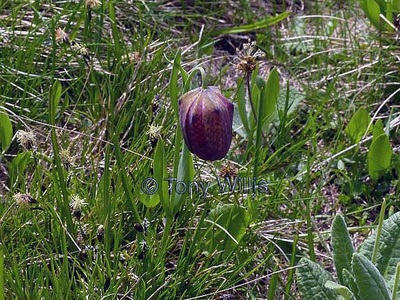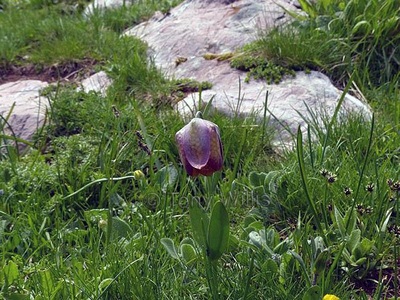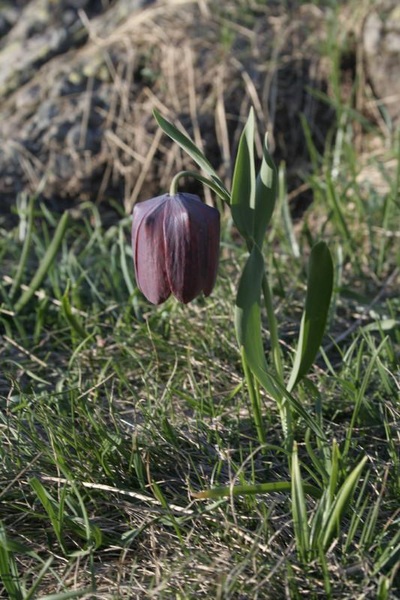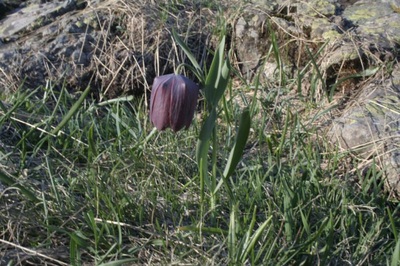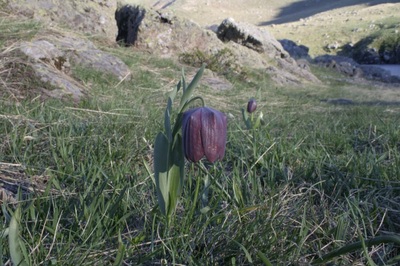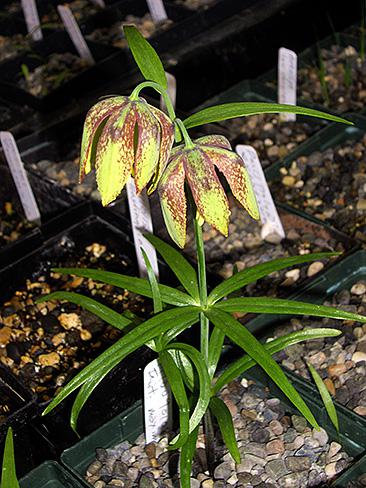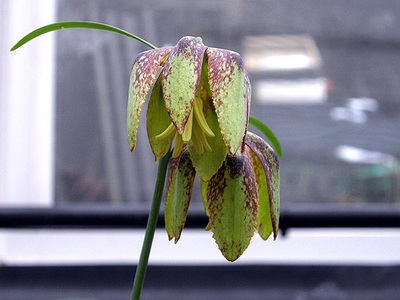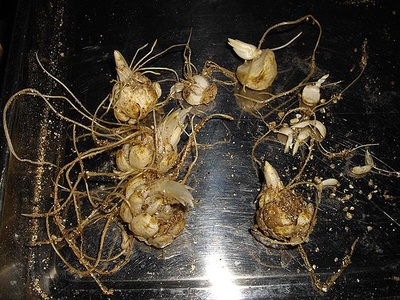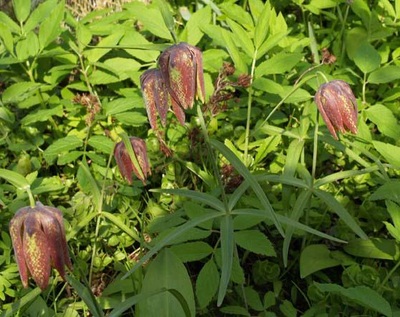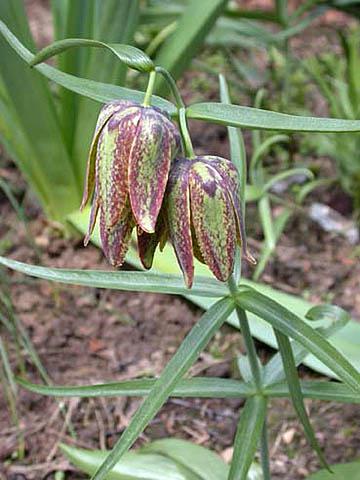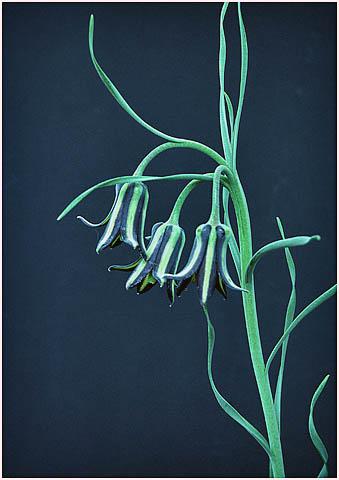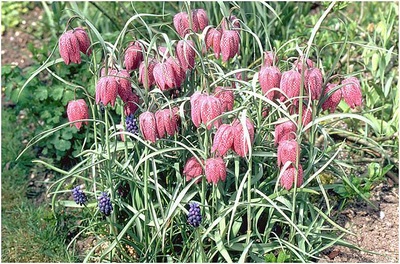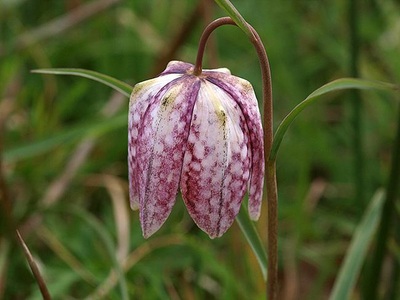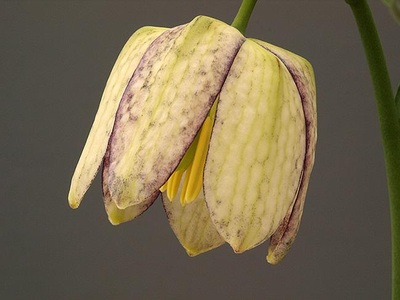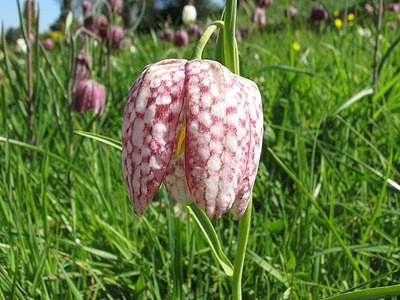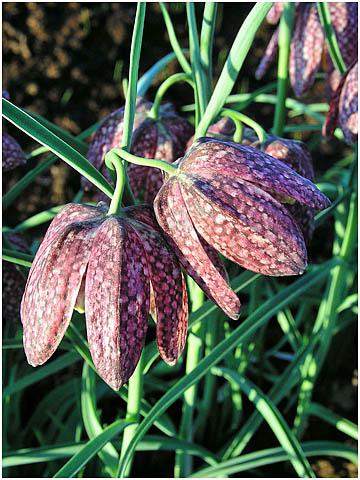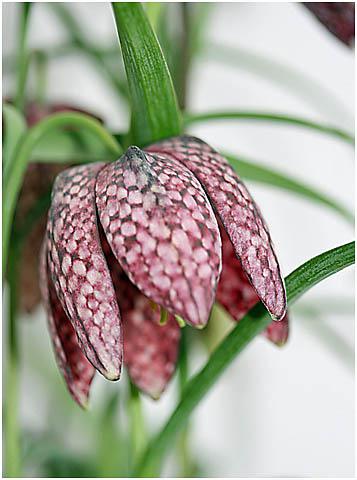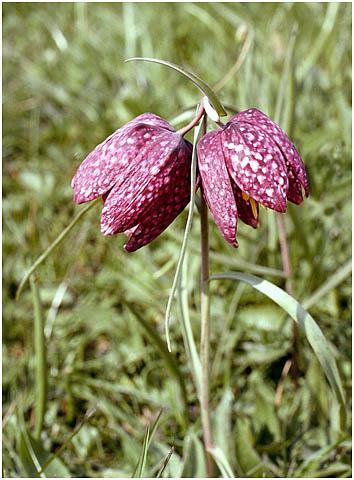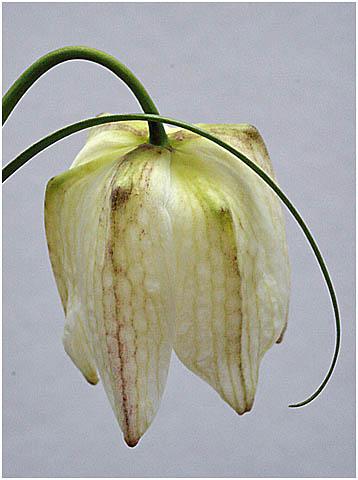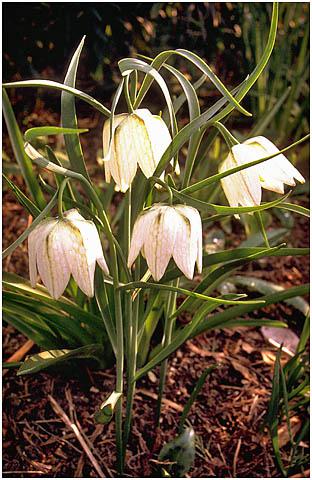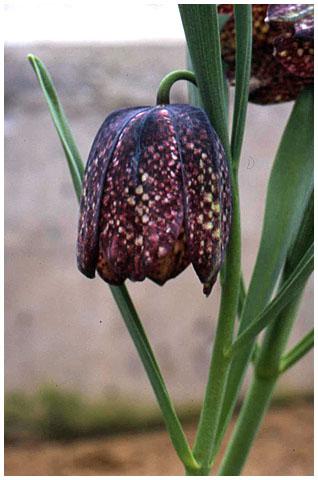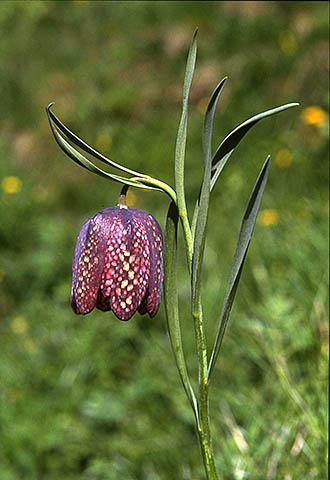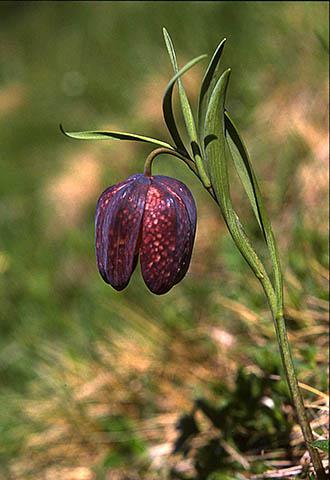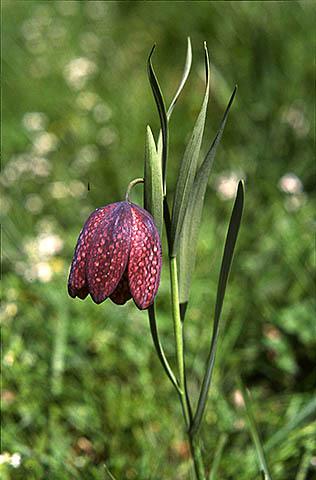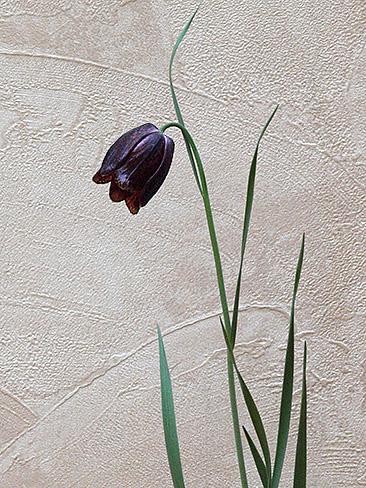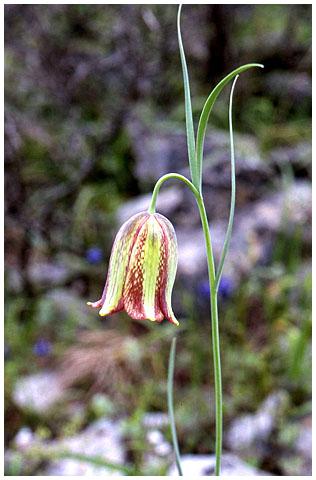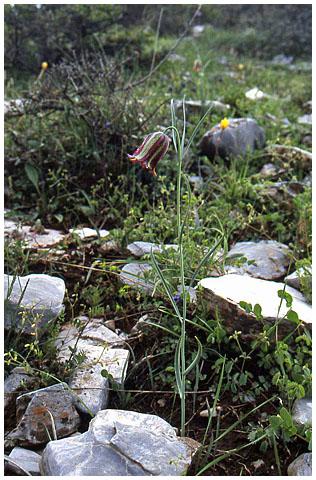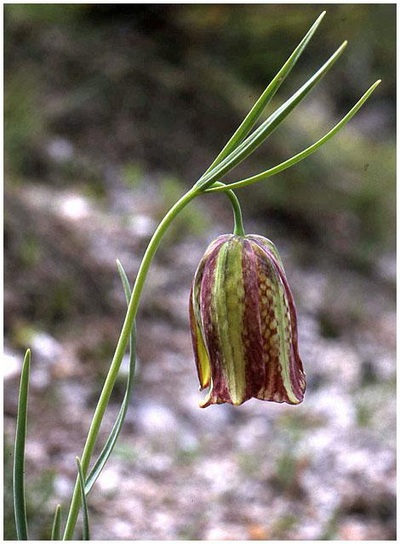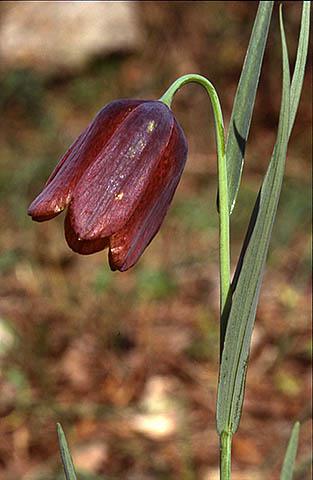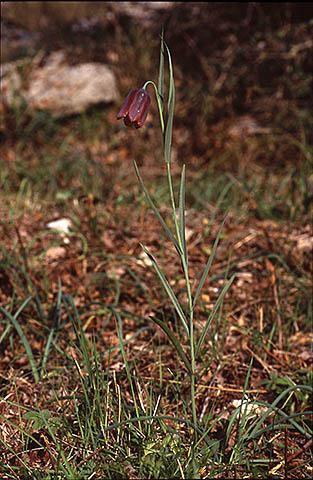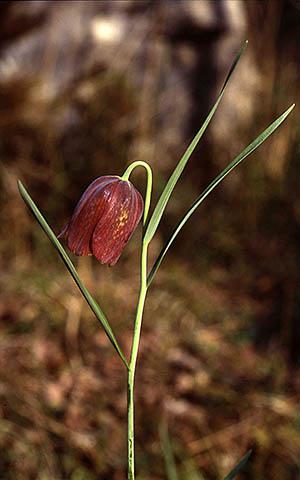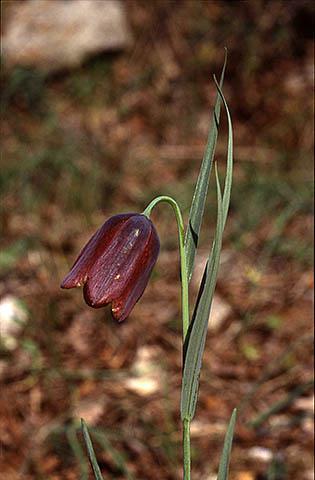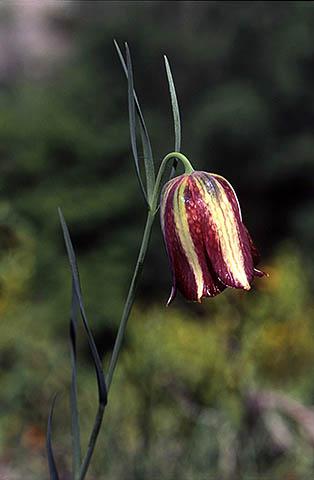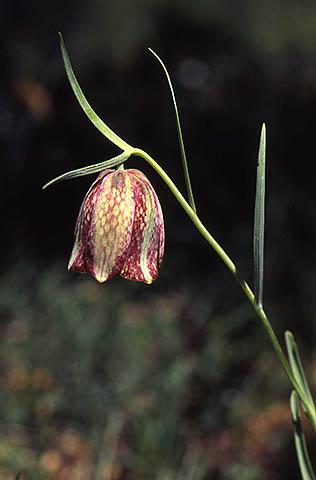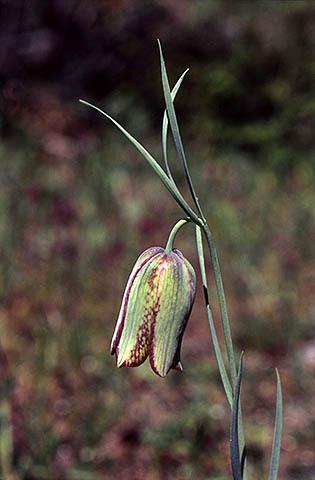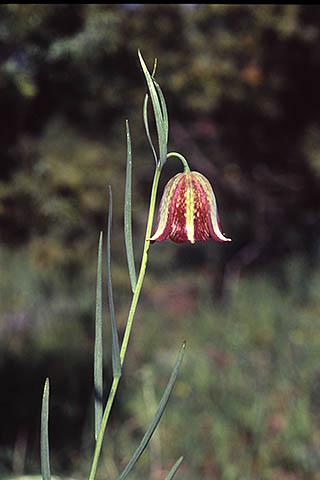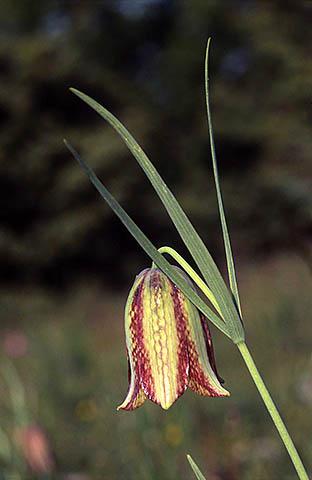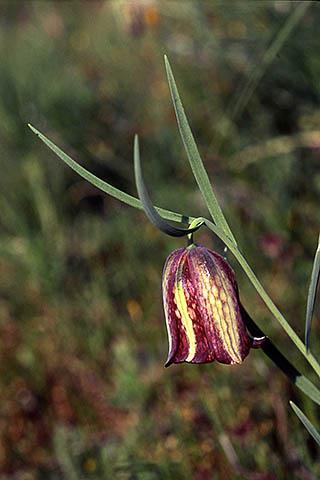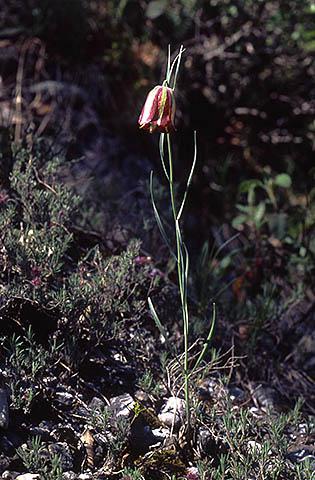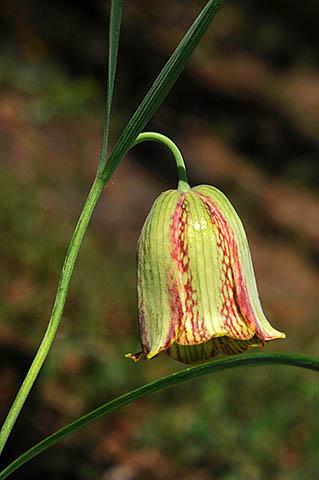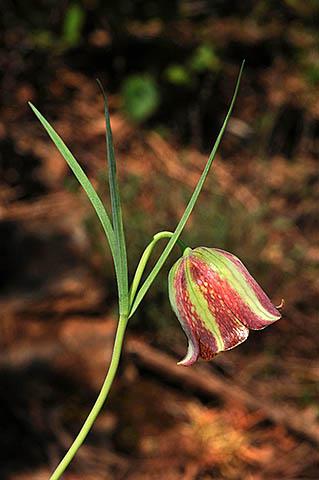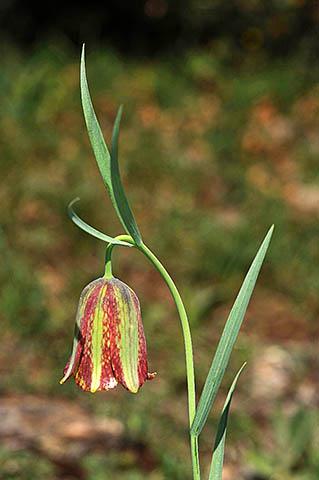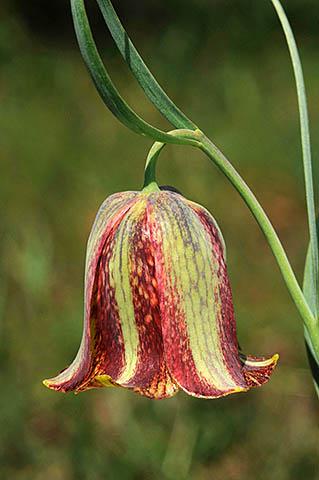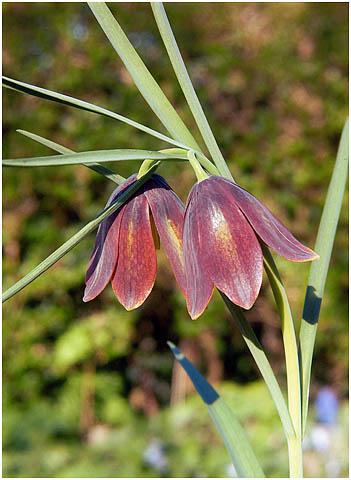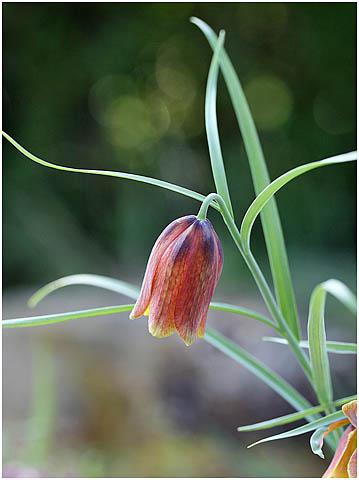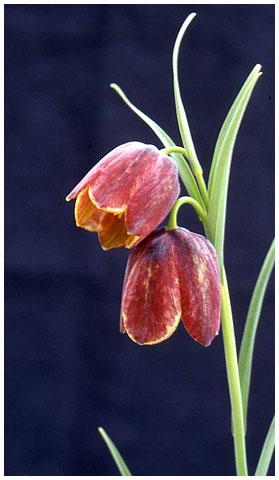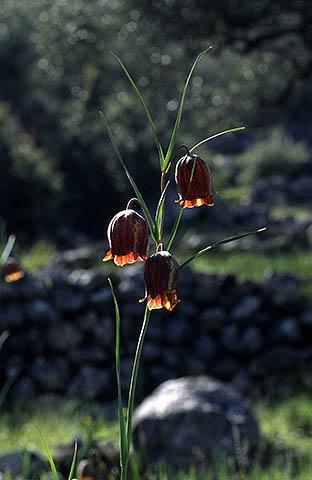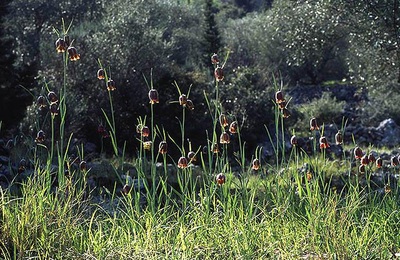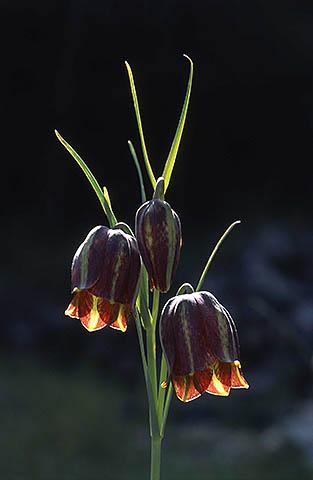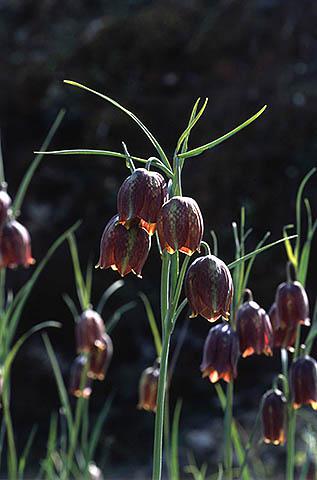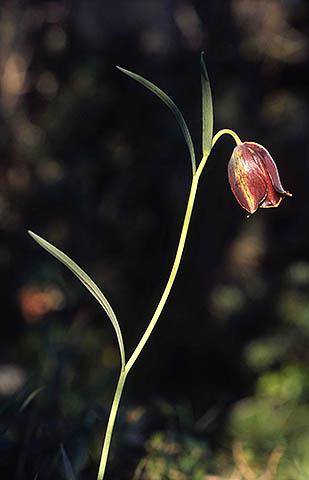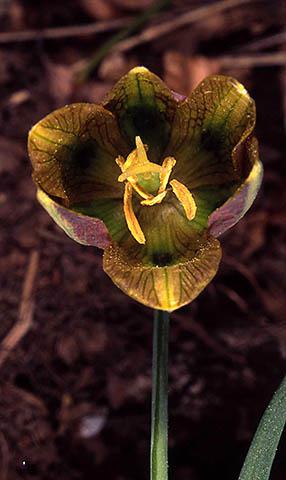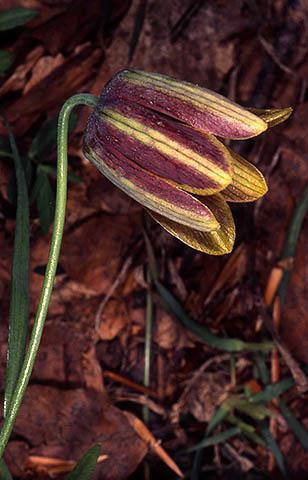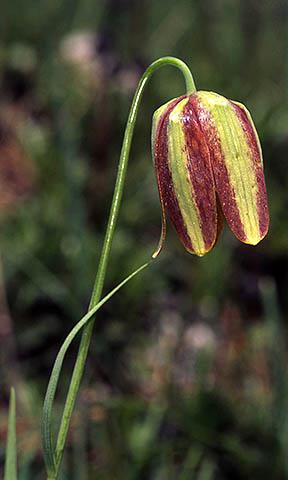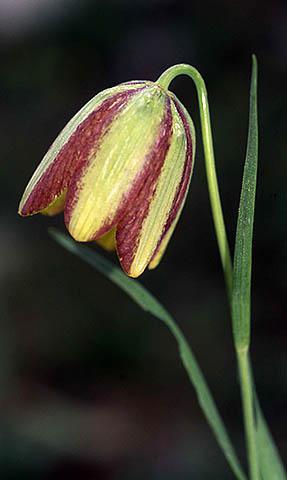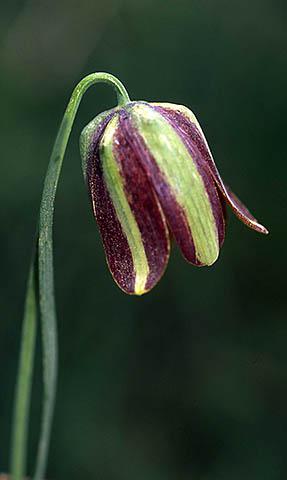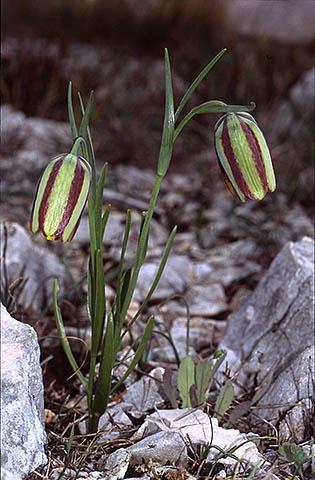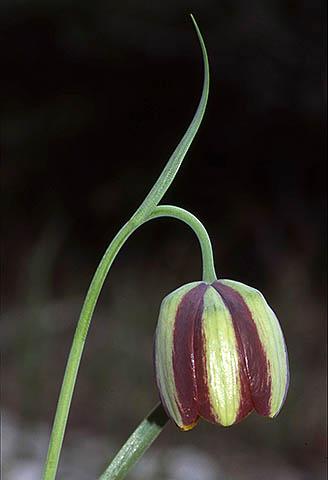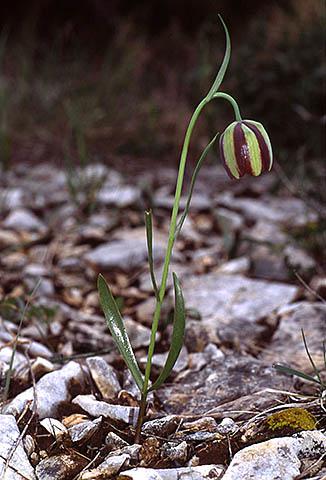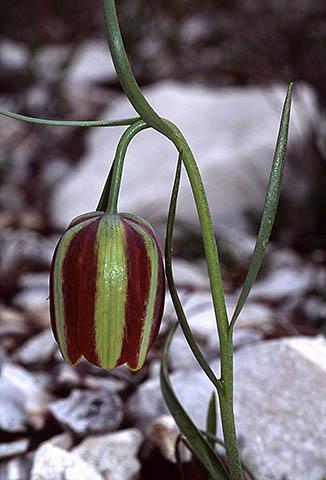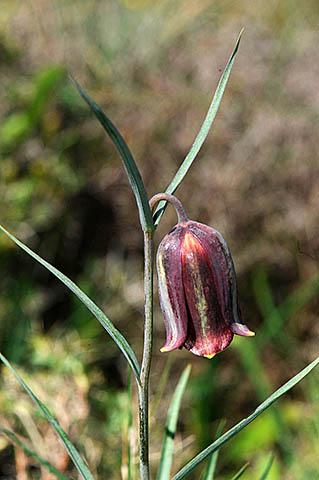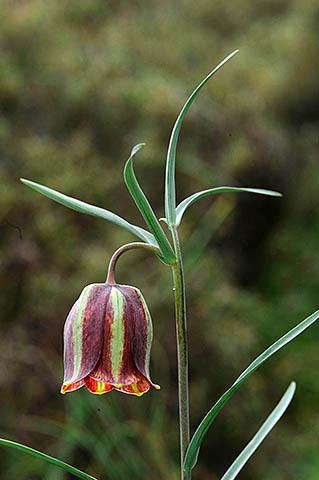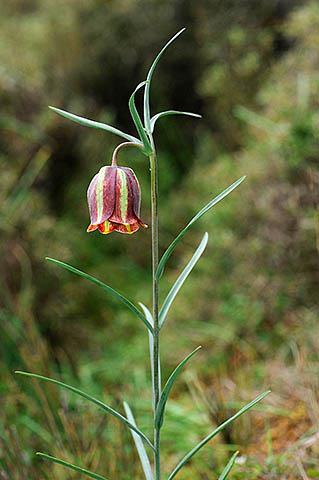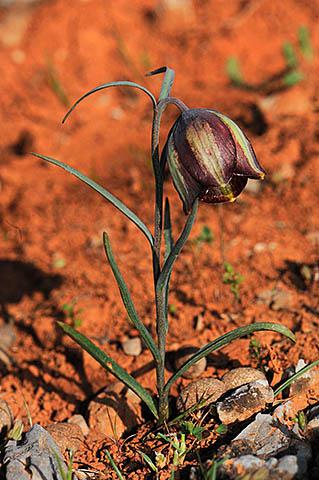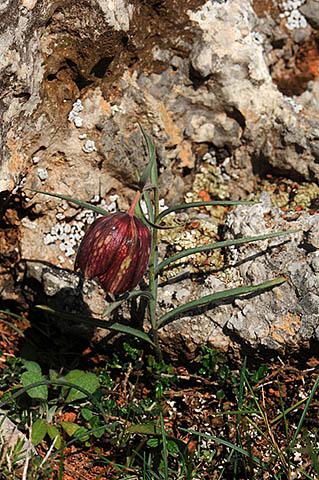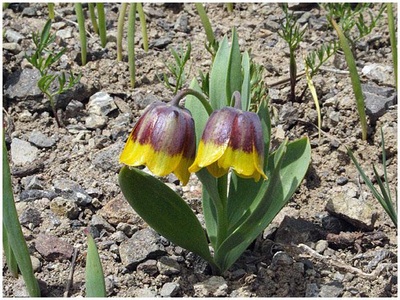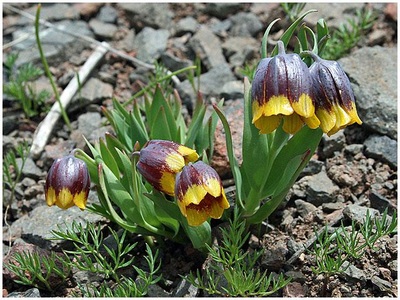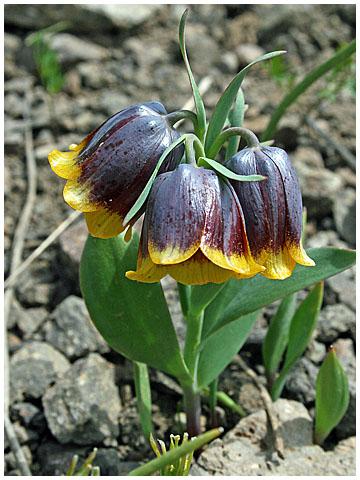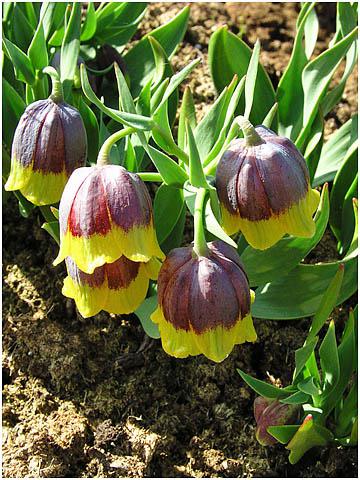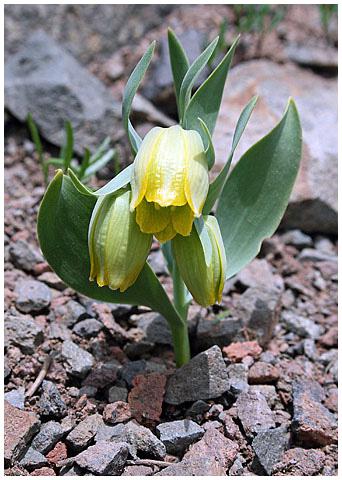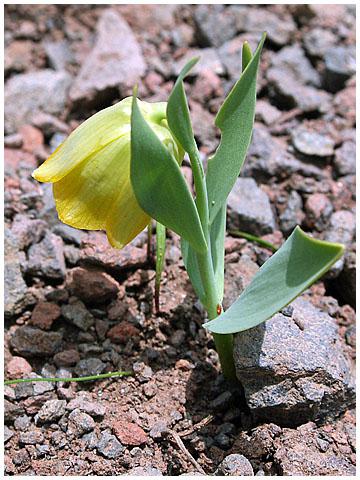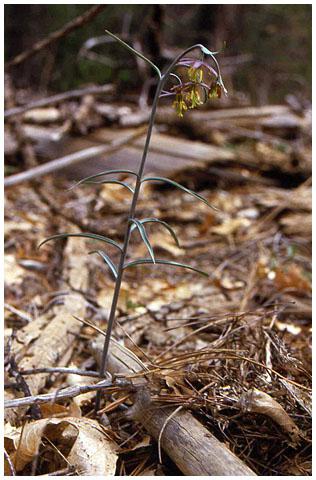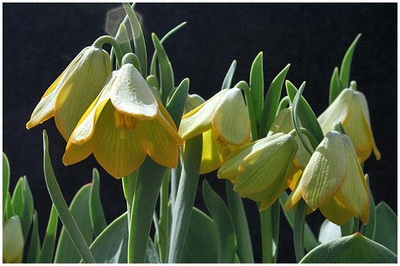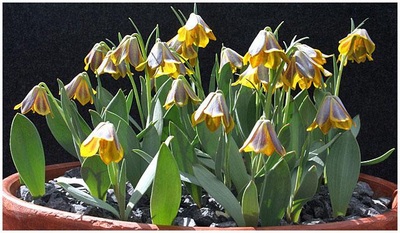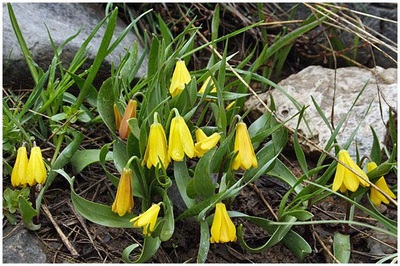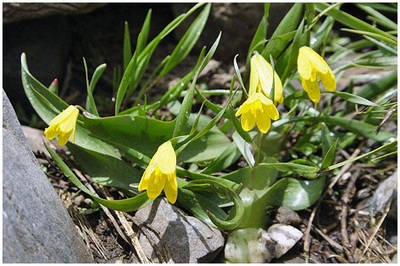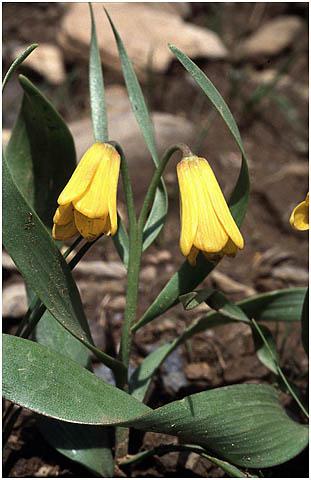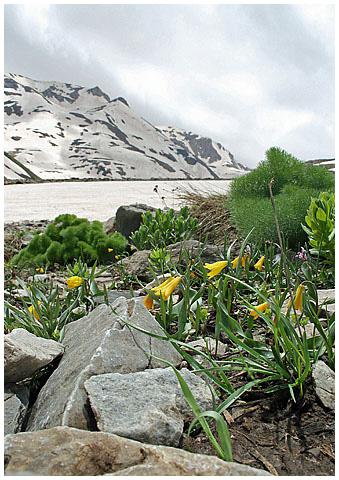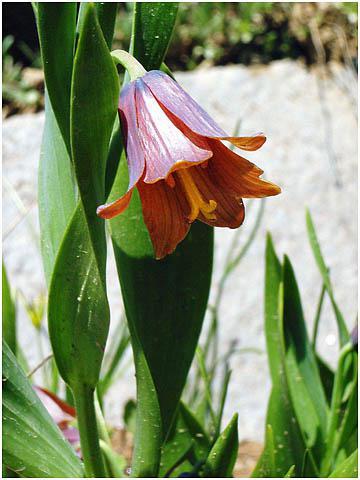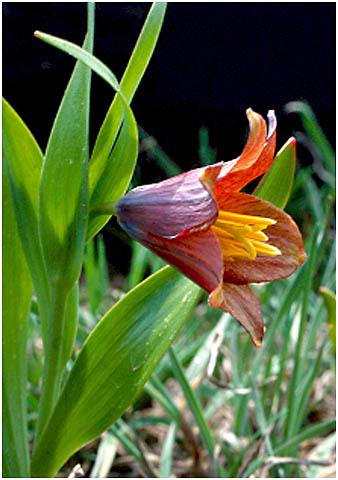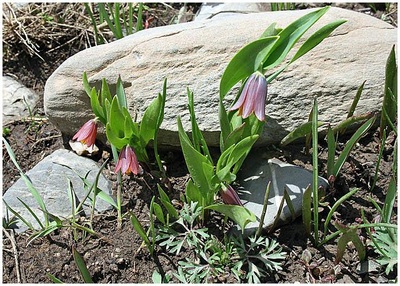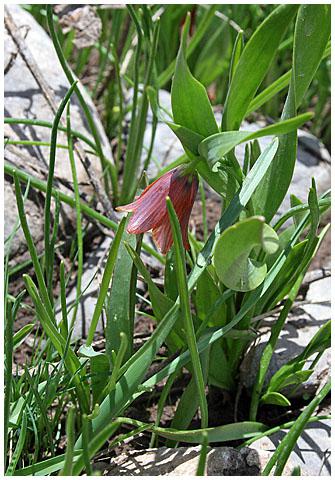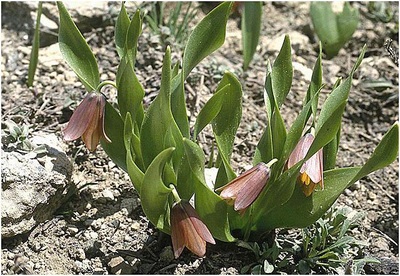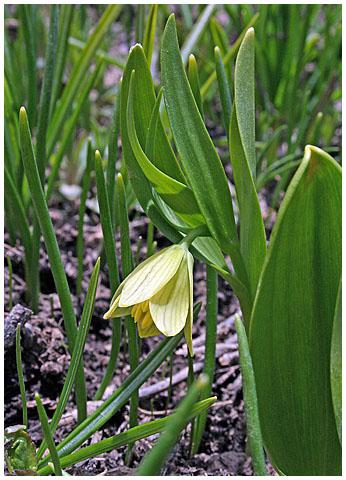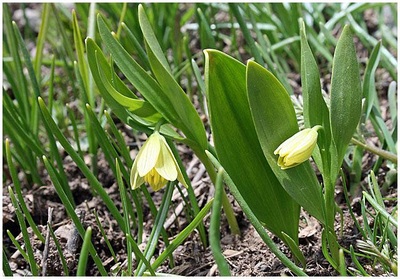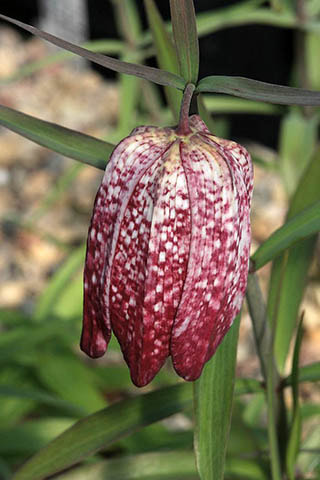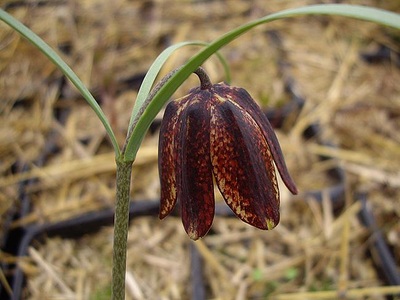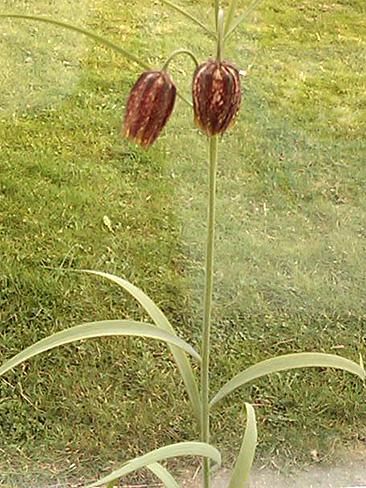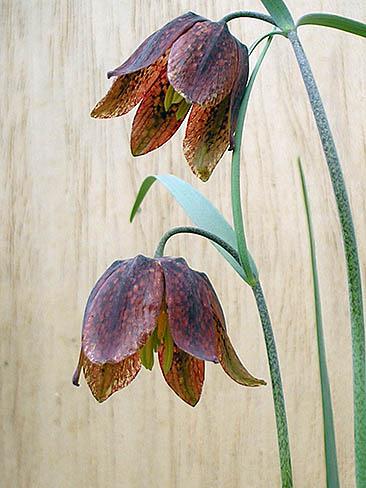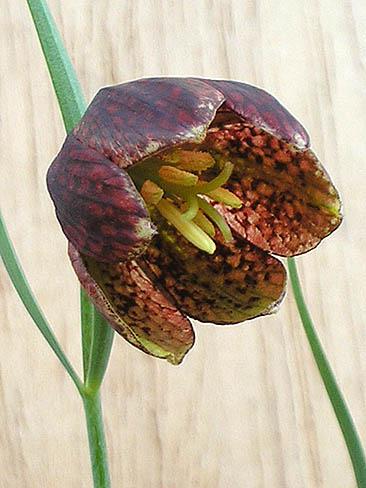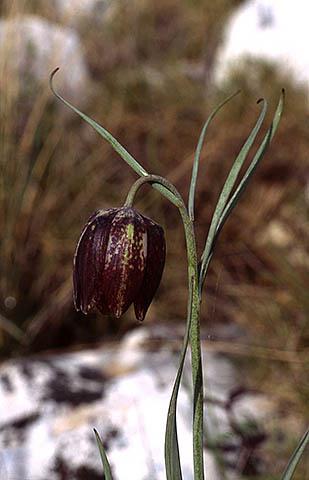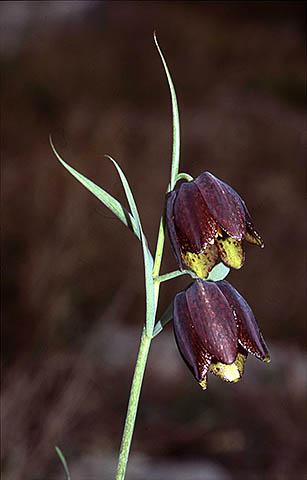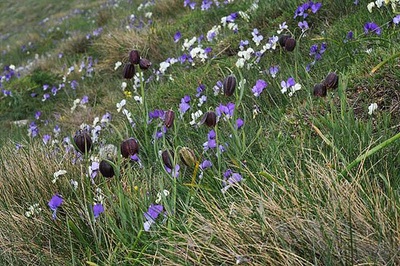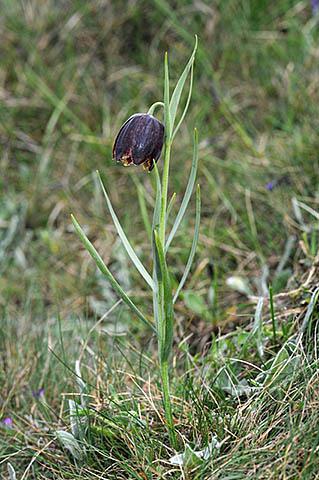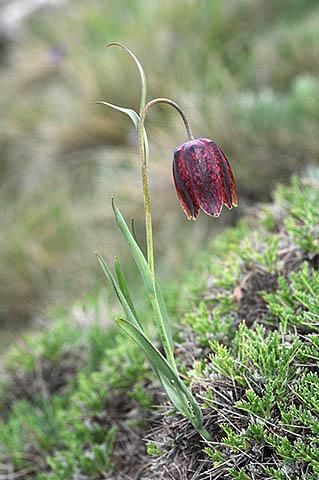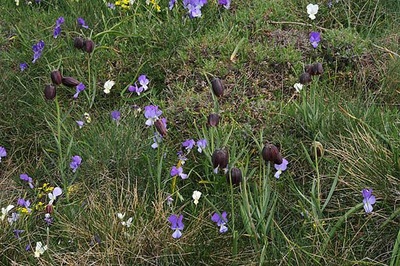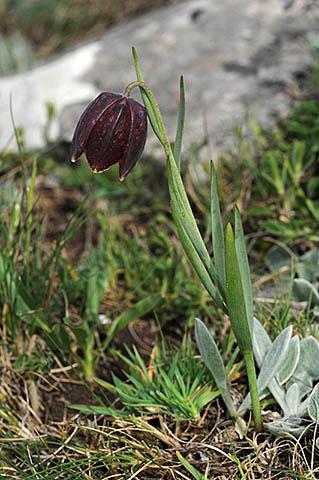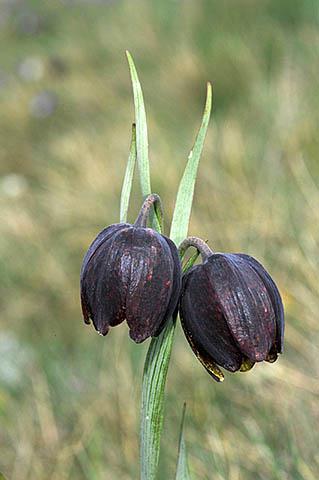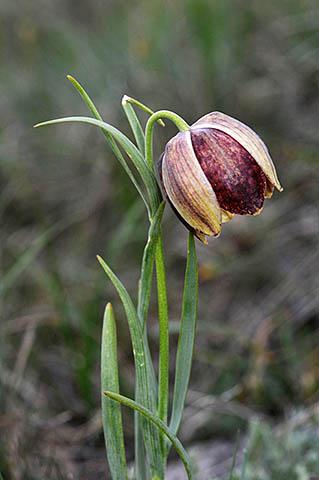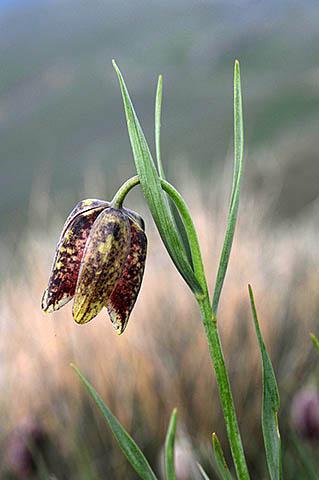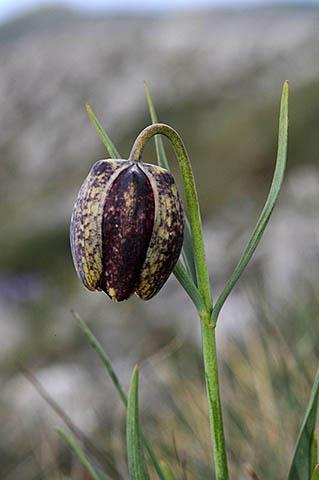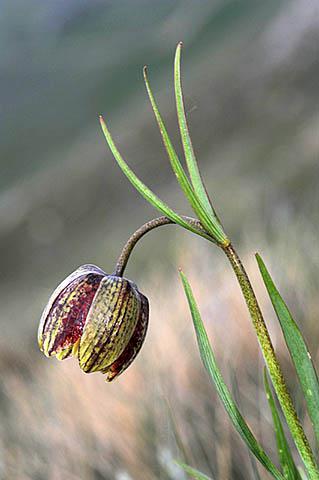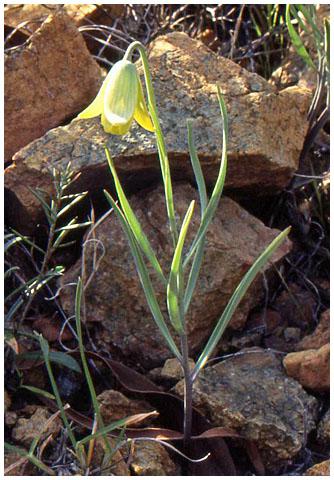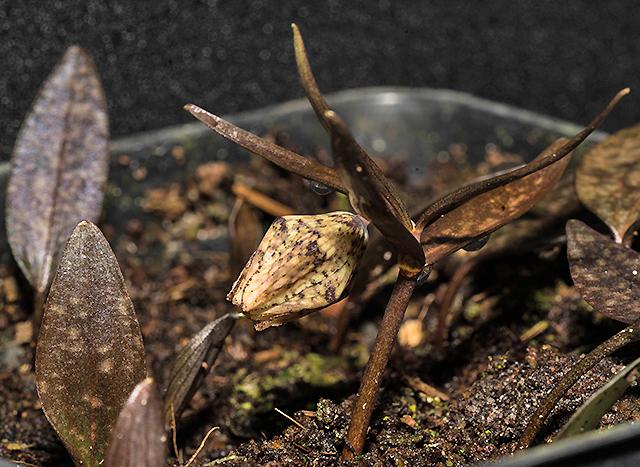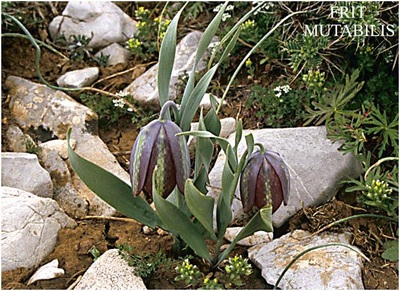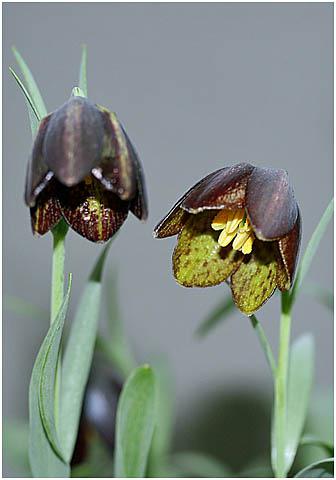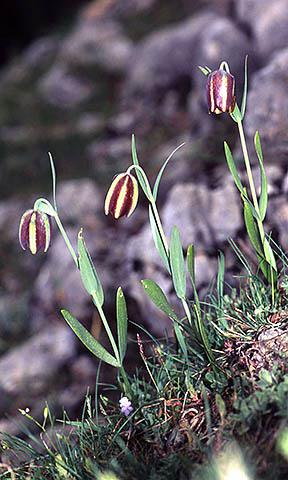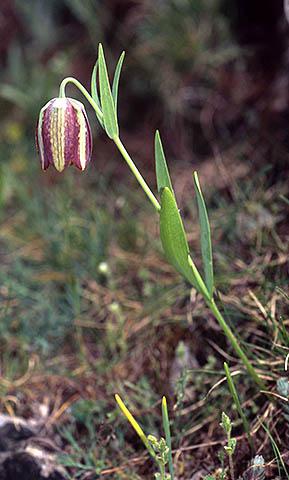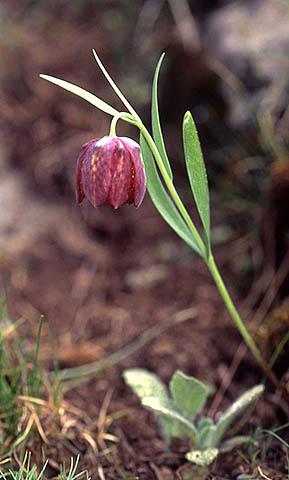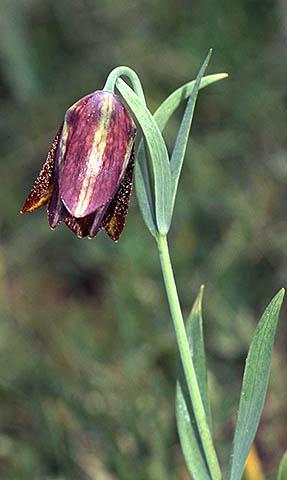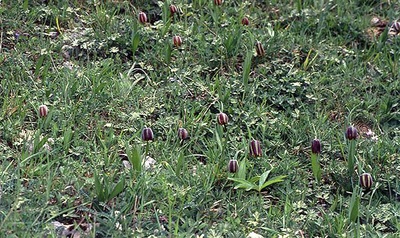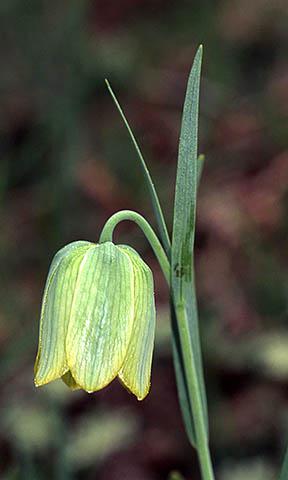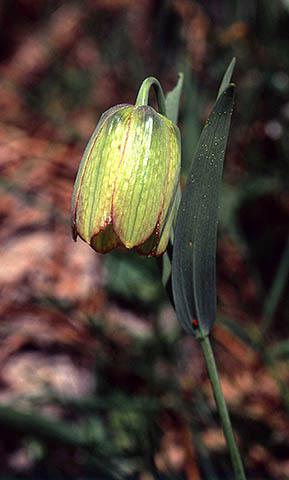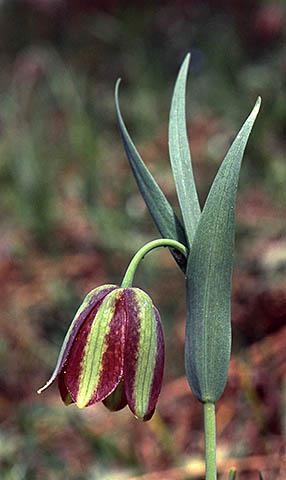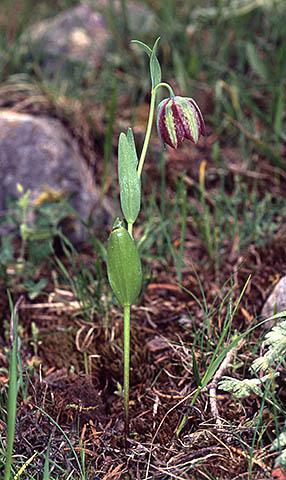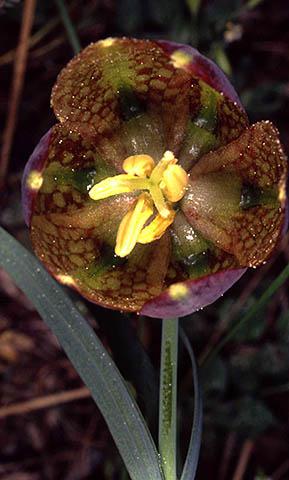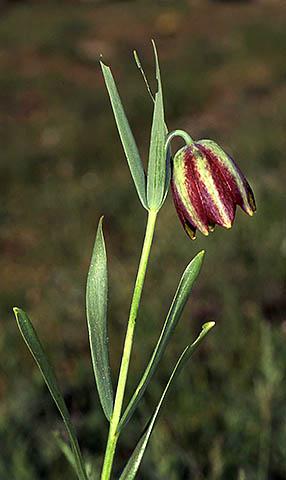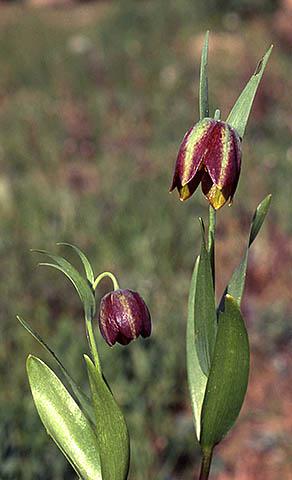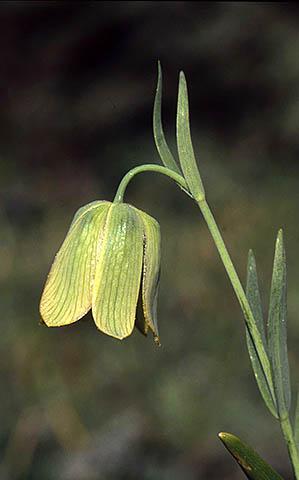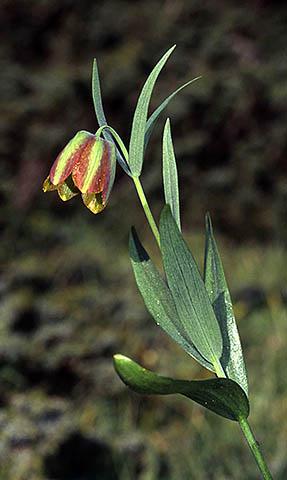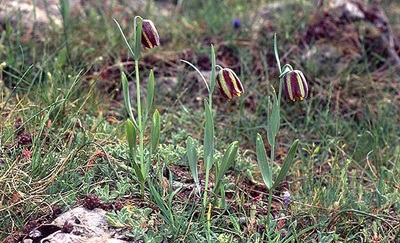COPYRIGHT: All images are © of the respective photographers. THEY MAY NOT BE COPIED AND USED ELSEWHERE WITHOUT PERMISSION.
FRITILLARIA SPECIES: M - N
Each species has been assigned a Cultivation Group, either A, B, C, or D. To view descriptions of these groups, click on Cultivation Groups or scroll to the bottom of this page where they are repeated.
|
Fritillaria macedonica A high altitude plant of the Albanian mountains. It is very similar in general appearance to small forms of F. latifolia, but the lower leaves are opposite and the upper in a group of three. It also has fine teeth on the margin of the inner tepals unlike the latter.
Cultivation Group: B in peaty soil would seem to offer the best chance of success. It is not easy to grow. |
|
Fritillaria maximowiczii A plant of far Eastern Russia and NE China. It has a single whorl of leaves and a single flower with a fimbriate edge to the tepals.
Cultivation: We have no experience of this in cultivation but Group D would be a good starting point ensuring that it remains cool at all times. |
|
Fritillaria meleagris ssp. burnattii This is very like a shorter stemmed form of F meleagris but the leaves are all grouped near the top of the stem and the style is smooth rather than papillose. It is known in several areas of the southern Alps.
Cultivation: Although introduced into cultivation several times, it has so far not persisted. It would be worth trying as for Group B in loose peaty soil kept cool and slightly moist in summer. |
|
Fritillaria meleagroides An inhabitant of wet soils, seeps and ditches throughout the continental climate zones of eastern Europe and central Asia as far as NW China. The single bract leaf serves to distinguish it from the closest relative F montana.
Cultivation Group: B It seems quite easy to grow in damp peaty soil which remains slightly moist in summer. |
|
Fritillaria monantha It can be recognised by its large flowers that can be from greenish yellow to pale purple, tessellated or spotted with yellowish brown or dark purple, sometimes very heavily so, combined with nectaries 6–10mm long and broad often whorled leaves. In this regard it looks rather like F thunbergii.
Cultivation: We have no experience of growing this in cultivation but it is widely grown in China for medicinal use. |
Cultivation Groups
Group A
Those from a Mediterranean-type climate zone at low to medium altitude. The major precipitation is during the winter and early spring but the summer is dry. The bulbs are dormant in summer but often protected from the heat of direct sunlight by tall herbs, shade of trees or by coastal fog.
It is worth trying these in well-drained soil in the open garden but unless your climate is Mediterranean in character, dryness in the summer will usually need to be contrived by overhead protection or planting amongst established, deciduous, shrub or tree roots. These species tend to be straightforward to grow in pots with summer dryness. In the northern hemisphere, watering is best started sparingly from mid-September, increasing once the shoots appear until dormancy sets in in May.
Group B
Those from high altitude and/or inland sites. The major soil moisture in this case is provided by melting snow in the spring and, although occasional thunder storms may occur, the summers tend to be dry but not so hot. In winter the soil is normally covered in snow so the temperature and soil water content is constant for what can be 5 or 6 months of winter during which little growth occurs.
These are normally more difficult in the open garden but can be grown in gritty compost in pots in a cold greenhouse with watering as above. Some benefit from refrigeration in winter in order to maintain dormancy.
Group C
Semi Desert plants. These are from inland sites with cold dry winters, some snowfall, spring snowmelt, and then very dry summers.
In most countries these are not suitable for outdoor cultivation but they grow well in pots in gritty compost under glass. They are best kept dry until early winter when water can be given sparingly until growth appears in spring.
Group D
Those from areas with summer rainfall and cool/cold dry winters. For example, those species from the Himalayas, SW China and NE China, Japan and SE Siberia. These all grow in fairly cool conditions throughout the year, often under protective shade of shrubs or deciduous trees. Snow and snowmelt are important but so is summer rainfall. The main growing season is through spring but root growth can start during the summer, coinciding with the summer rains.
These seem to do quite well in cooler climates grown either in the open garden or in pots of gritty, humus soil, kept outside with perhaps a little protection from excessive winter rain.
Group A
Those from a Mediterranean-type climate zone at low to medium altitude. The major precipitation is during the winter and early spring but the summer is dry. The bulbs are dormant in summer but often protected from the heat of direct sunlight by tall herbs, shade of trees or by coastal fog.
It is worth trying these in well-drained soil in the open garden but unless your climate is Mediterranean in character, dryness in the summer will usually need to be contrived by overhead protection or planting amongst established, deciduous, shrub or tree roots. These species tend to be straightforward to grow in pots with summer dryness. In the northern hemisphere, watering is best started sparingly from mid-September, increasing once the shoots appear until dormancy sets in in May.
Group B
Those from high altitude and/or inland sites. The major soil moisture in this case is provided by melting snow in the spring and, although occasional thunder storms may occur, the summers tend to be dry but not so hot. In winter the soil is normally covered in snow so the temperature and soil water content is constant for what can be 5 or 6 months of winter during which little growth occurs.
These are normally more difficult in the open garden but can be grown in gritty compost in pots in a cold greenhouse with watering as above. Some benefit from refrigeration in winter in order to maintain dormancy.
Group C
Semi Desert plants. These are from inland sites with cold dry winters, some snowfall, spring snowmelt, and then very dry summers.
In most countries these are not suitable for outdoor cultivation but they grow well in pots in gritty compost under glass. They are best kept dry until early winter when water can be given sparingly until growth appears in spring.
Group D
Those from areas with summer rainfall and cool/cold dry winters. For example, those species from the Himalayas, SW China and NE China, Japan and SE Siberia. These all grow in fairly cool conditions throughout the year, often under protective shade of shrubs or deciduous trees. Snow and snowmelt are important but so is summer rainfall. The main growing season is through spring but root growth can start during the summer, coinciding with the summer rains.
These seem to do quite well in cooler climates grown either in the open garden or in pots of gritty, humus soil, kept outside with perhaps a little protection from excessive winter rain.
